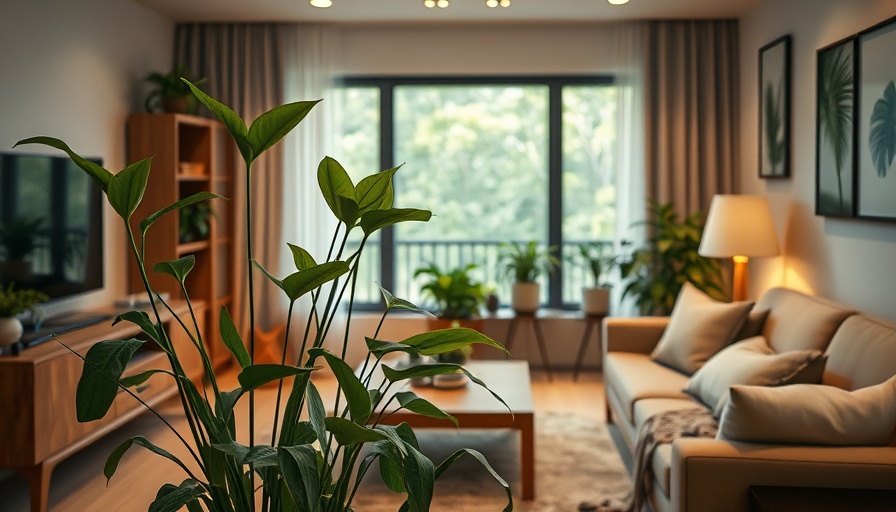
Bringing Nature Indoors: The Allure of Biophilic Design
In an age where urban living often disconnects us from nature, biophilic design has emerged as a popular solution for homeowners desiring to create a soothing natural environment within their living spaces. By integrating elements that mimic nature, we can transform our homes into personal oases that promote well-being, creativity, and a sense of tranquility.
Plants: The Heart of Your Natural Sanctuary
No transformation feels complete without the introduction of indoor plants. They're not just mere decorations; plants like Snake Plants, Pothos, and ZZ Plants provide several benefits. According to research by Terrapin Bright Green, incorporating plants into your living room significantly reduces stress, boosts focus, and enhances air quality. Starting with a few easy-care plants in varied heights and textures can enhance the visual appeal and promote a calming atmosphere, making any living space feel alive.
Harnessing Natural Light
Light serves as a vital component in the concept of biophilic design. Maximizing natural light helps us feel more in tune with our surroundings. One effective strategy is to swap out heavy drapes for sheer curtains that allow sunlight to flood the room. Not only does natural light accentuate the beauty of your space, but it also elevates mood and energy levels, making it a simple yet impactful change to implement.
Natural Materials: The Textural Experience
Integrating natural materials is another cornerstone of biophilic design. Think of warm woods, cotton, and stone—each element can add texture and warmth, reinforcing the connection to the outdoors. For instance, wooden furniture pieces blended with stone decorations, such as decorative rocks or pebble art, help create a cohesive and inviting aesthetic.
Colors Inspired by Nature
The hues we choose for our living space can also echo the serenity of nature. Shades of green, earthy browns, and tranquil blues can evoke soothing emotions and a sense of balance. Using nature’s color palette in your decor helps create an environment that feels harmonious, creating a backdrop for relaxation.
Creating Viewpoints and Focal Points
Another key element in achieving a biophilic living room is establishing curated views through windows and focal points. Whether it’s arranging your furniture to face exterior views or using artwork that features natural scenes, these visual connections to nature can significantly enhance your space. Adding water features, such as a small indoor fountain, can also invoke a sense of calm through the soothing sound of trickling water.
Your Quest for a Biophilic Home
Incorporating nature into your home is not just about aesthetics; it’s about creating a living environment that nurtures your wellbeing. With these tips, transforming your living room into a biophilic sanctuary can be as simple as choosing the right plants, maximizing light, and selecting materials that resonate with the natural world.
As you embark on this journey, remember that every small change contributes to a larger transformation. Start slowly, and over time, you’ll create a warm and inviting place filled with nature's beauty.
 Add Row
Add Row  Add
Add 




Write A Comment